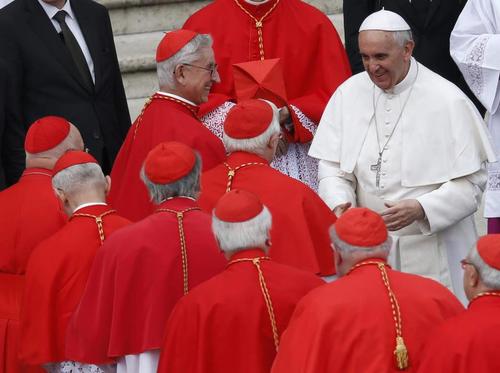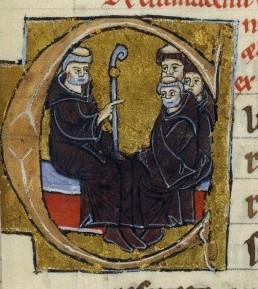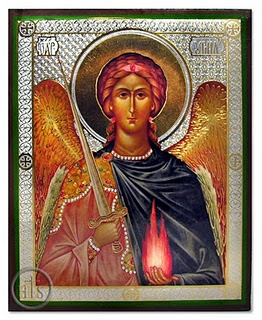802 new saints reflect the the glory of Love
Today the Church has 802 new saints, 800 of them are the martyrs of Otranto. This group of canonized were martyrs while you may say that Laura Montoya (aka, Lupita) and Maria Guadalupe García Zavala were “ordinary saints.” These are the first canonizations done by Pope Francis.
What catches our eyes that in one swoop 800 are recognized as martyr saints. Their history tells us that Ottoman soldiers invaded a Christian village town in 1480; the villagers were killed for refusing to convert to Islam, in fact, beheaded because they refused to renounce their Catholic faith.
The wall of skulls of the martyrs of Oltranto (note the picture) displayed prominently in Otranto Cathedral (Apulia region of Italy). These are the human remains, the relics of holy men and women; our new intercessors before the throne of Grace.
The year was 1480 and the fateful day when a fleet of 70 to 200 Ottoman Turks ships reached the city of Otranto, then part of the Kingdom of Naples. The Turkish forces were led by Gedik Ahmed Pasha.
July 28 marks the beginning of the Ottoman wars (1453-1683) in Europe; Mohammed II had invader and conquered Constantinople just 28 years earlier. On August 12, 800 people of Otranto, Antonio Primaldo and his companions were taken to the hill of Minerva, now called the Hill of the Martyrs, and slaughtered for being faithful to Jesus Christ and His Church.
The Church’s precess of investigating the circumstances and holiness of these people began in 1539 and end on 14 December 1771 with the beatification of the people of Oranto by Pope Clement XIV. Benedict XVI issued a decree on 6 July 2007, stating that out of hatred for the faith these Catholics were killed. Therefore, certifying that martyrdom happened and therefore saints.
The Pope homily is here:
In this seventh Sunday of Easter we are gathered to celebrate with joy a feast of holiness. Thanks be to God who has made His glory – the glory of Love – to shine on the Martyrs of Otranto, on Mother Laura Montoya and María Guadalupe García Zavala. I greet all of you who have come to this celebration – from Italy, Colombia, Mexico, from other countries – and I thank you! Let us look on the new saints in the light of the Word of God proclaimed: a Word that invited us to be faithful to Christ, even unto martyrdom; a word that recalled to us the urgency and the beauty of bringing Christ and his Gospel to everyone; a word that spoke to us about the witness of charity, without which even martyrdom and mission lose their Christian savor.
Continue reading 802 new saints reflect the the glory of Love
Saints Odo, Maiolus, Odilo, Hugh, and Blessed Peter the Venerable, Abbots of Cluny
Lord our God, you are the shield and glorious reward of those who walk blamelessly before you. Keep us steadfast in your holy service so that, by the example and intercession of the blessed abbots of Cluny, we may with open hearts run the path of perfect charity.
The Benedictine liturgical calendar honors the holy abbots of Cluny, Saints Odo, Majolo, Odilo, Hugh, and Blessed Peter the Venerable.
Saint Odo, the second abbot of Cluny, born circa 878, and he died on 18 November, 942. He reformed several monasteries in Aquitaine, northern France, and Italy, and was entrusted with some important political missions;
Saint Majolus or Maieul born in 906, and died in 994. Otto II desired to make him pope in 974 but he refused;
Saint Odilo, fifth abbot of Cluny, born around 962 and died on 31 December 1048. The number of monasteries in the Cluniac congregation (mainly by reforming existing monasteries) increased from 37 to 65 under his abbacy; we worked to achieve a truce, that is, ‘the peace of God’ that restricted warfare; he acted charitably which saved thousands during a time of famine and he is most remembered for introducing the Feast of All Saints into the Roman liturgical calendar;
Saint Hugh the Great was born at Semur (Brionnais in the Diocese of Autun, 1024 and died at Cluny, 28 April, 1109. A friend of Pope Saint Gregory VII Hugh played a key role in the reform of the clergy, and was widely recognized for his sanctity even during his lifetime.
Popes of Rome and Alexandria meet: Francis and Tawadros
A rare meeting between two Popes, that is, between the Patriarch of the West and the Patriarch of Alexandria happened earlier today in Rome when Pope Francis received Pope Tawadros of Alexandria, who heads the largest Christian Church in the Middle East. The first meeting between the two churches happened 40 years ago to the day with the Servant of God Pope Paul VI and Pope Shenouda III; at that meeting a Christological agreement was signed and a hope expressed to find a path to unity. Tawadros is on his first pilgrimage outside of Egypt since becoming the head of the Coptic Church in November. He is in Italy for 5 days.
Pope Tawadros proposed that 10 May each year should be marked as a day of celebration between the two churches. He also invited Francis to visit his Church, founded by Saint Mark the Evangelist around the middle of the First century.
Here is Pope Francis’ address:
For me it is a great joy and a truly graced moment to be able to receive all of you here, at the tomb of Saint Peter, as we recall that historic meeting forty years ago between our predecessors, Pope Paul VI and the late Pope Shenouda III, in an embrace of peace and fraternity, after centuries of mutual distrust. So it is with deep affection that I welcome Your Holiness and the distinguished members of your delegation, and I thank you for your words. Through you, I extend my cordial greetings in the Lord to the bishops, the clergy, the monks and the whole Coptic Orthodox Church.
Today’s visit strengthens the bonds of friendship and brotherhood that already exist between the See of Peter and the See of Mark, heir to an inestimable heritage of martyrs, theologians, holy monks and faithful disciples of Christ, who have borne witness to the Gospel from generation to generation, often in situations of great adversity.
Continue reading Popes of Rome and Alexandria meet: Francis and Tawadros
Saint Isaiah, Prophet
 In the Roman Martyrology we read that today the Church liturgically recalls Saint Isaiah, a major prophet in the Old Testament. A translation of the entry found in the Martyrology:
In the Roman Martyrology we read that today the Church liturgically recalls Saint Isaiah, a major prophet in the Old Testament. A translation of the entry found in the Martyrology:
Commemoration of holy Isaiah, the prophet, who, in the days of Uzziah, Jotham, Ahaz, and Hezekiah, kings of Judah, was sent to reveal that the Lord was faithful and a savior to an unfaithful and sinful people, and to fulfill the promise swear by God to David. It is said that he met death as a martyr at the hands of the Jews under king Manassah.
Jesus’ Ascent into Heaven
The Ascension is the feast of the human. With Jesus, physical, carnal humanity enters into the total dominion with which God makes all things. It is Christ who goes to the root of everything. It is the feast of the miracle, an event which by its strength recalls the mystery of God.
This is why the Ascension is the feast where all of Mystery gathers together and where all of the evidence of things is gathered together. It is an extraordinary and very strange feast, where all the faces of all things meet to cry out to unaware, inattentive, obscure, and unseeing man the light of which they are made, to give him back the meaning by which he entered into relationship with everything, to shout out to him the task he has in things, his role among things. Everything depends on him; all things were made for man.
Whoever tries to render witness to the Lord with his life is already part of the mystery of His Ascension, because Christ who ascended into heaven is Man for whom everything is made, Man who has begun to take possession of the things of the world.
Father Luigi Giussani
The Holy Rosary
Novena to Our Lady grows over 18 years at Our Lady of Pompeii Church, East Haven
The beauty of devotion is the fidelity with which we live in relation to the person receiving love and affection. This is true, I believe, whether its one’s devotion is a friend, a wife, a child or a priest; so much so for the Blessed Virgin Mary, the most holy and blessed Mother of the Lord. Devotion is about affection for the presence of another. Devotion (piety in the true sense of the definition) is born of an experience of the maternal affection for Mary, Mother of God, Mother of Perpetual Help. This experience, I suggest, is what sparked two women and a priest that is now touching the hearts of Catholic faithful from the greater New Haven area to start a Novena to Our Lady of Perpetual Help 18 years ago. Think of gentle prayers and love of a few now grown to more than 200 people on the 9th Wednesday.
Clarence Gallagher, SJ, RIP
The Church mourns Father Clarence Gallagher, SJ, who died yesterday in England.
The Ear of the Heart: An Actress’ Journey From Hollywood to Holy Vows: Dolores Hart gives personal insight
 You know from a previous post here that Mother Dolores Hart, OSB, nun of the Abbey of Regina Laudis (Bethlehem, CT) published her autobiography, The Ear of the Heart: An Actress’ Journey From Hollywood to Holy Vows (Ignatius Press, 2013). The book is co-authored with lifelong friend Richard DeNeut. There was a book signing this past Sunday.
You know from a previous post here that Mother Dolores Hart, OSB, nun of the Abbey of Regina Laudis (Bethlehem, CT) published her autobiography, The Ear of the Heart: An Actress’ Journey From Hollywood to Holy Vows (Ignatius Press, 2013). The book is co-authored with lifelong friend Richard DeNeut. There was a book signing this past Sunday.
After a career in acting, Mother Dolores entered Benedictine life Regina Laudis Abbey in 1963. The abbey was founded in 1947.
Joseph Pronechen of the National Catholic Register interviewed Mother Dolores at the Abbey. One of the things worth hearing from Hart is:
The one thing is the Gregorian chant, and what a gift it is to be able to sing and to pray at the same time. I think that I would hate to see people lose that part of the Tradition of the Church, because the chant goes back over a thousand years.
Mother Dolores has been featured on the Communio blog in the past. See a post here and here.
The 4 known angels: Gabriel, Michael, Raphael and Uriel
There is an icon of an angel in the daily Mass chapel at Our Lady of Pompeii Church (East Haven, CT) but it is so high that no one can really see the details of the icon, even trying to make out the Greek is difficult for young eyes. The pastor, Father John, promised a gift to the one who identifies the icon at Mass this morning which opened a door for inquiry. Piqued with wonder several, including yours truly, set out to determine the angel’s identity. At first glance I thought it was the Archangel Raphael. But closer examination showed me that it was really Gabriel. In the meantime, I asked one of the Apostles of the Sacred Heart, a curious creature and holy woman, how many archangels are there.
An “angel” denotes a function, not a nature; they are messengers. The archangels are leaders of the other angels, hence they are called the princes of the angels. As you know Western Christians venerate three archangels: Gabriel, Michael and Raphael. But, few know that there is a fourth named archangel (plus three other un-named archangels), one who is little known and not liturgically commemorated in the Latin Liturgy, but the venerated by Christians of Eritrea (related to the Coptic Church), the Anglican Communion, and Judaism. His name, Uriel, meaning “God is my light.”
Archangel Uriel’s feast day is July 11.
Archangel Uriel, according to pious legend (and I am not being dismissive by using these words because legend isn’t used as fiction), indicates that Uriel is known as the angel of wisdom as he illumines the heart and mind to know God’s truth. He is “The Light or Fire of God.” You might say he’s the archangel of discernment. Perhaps this is the angel who assisted Saint Ignatius of Loyola in writing the principles of Discernment in his Spiritual Exercises! As this Orthodox prayer says,
Oh holy Saint Uriel, come to our aid with your legion of angels! Intercede for us that our hearts may burn with the fire of God. Obtain for us the grace to use the sword of
truth to fight against all that is not in conformity to the most adorable will of God in our lives.
The apocryphal texts of the biblical tradition in question are the little known Book of Enoch and Esdras. What we learn is that Uriel is one of seven archangels who preside over the world; that Uriel reveals that rebellious and fallen angels will be judged by God and that Uriel warns the prophet Noah about the flood.
Moreover, in 2 Esdras, God sends Uriel to answer a series of questions that the prophet Ezra about recognizing the signs of good and evil at work in the world.
Continue reading The 4 known angels: Gabriel, Michael, Raphael and Uriel








